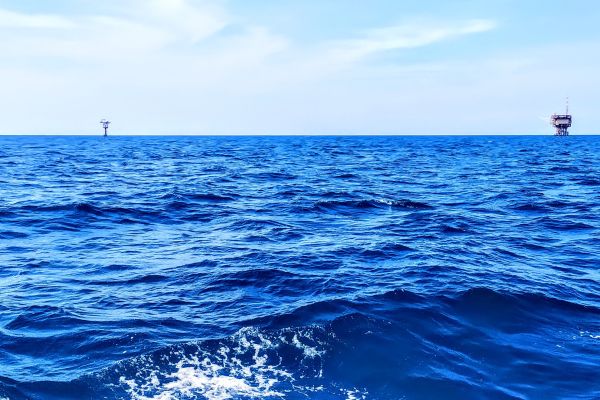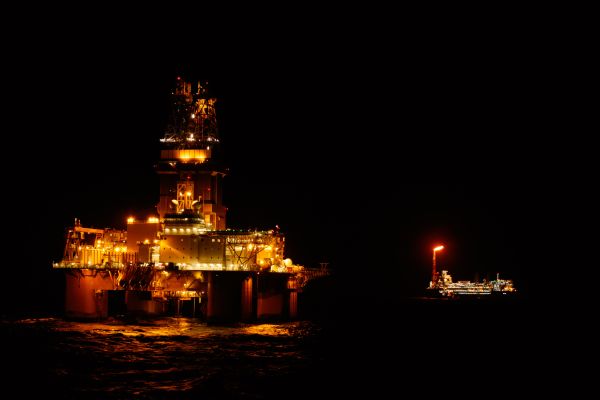‘Every degree matters’ in the words of the Committee on Climate Change. Developing carbon capture and storage is back on the agenda after withdrawal of UK funding in 2015.
Carbon capture and storage (CCS) separates the CO2 produced by industry, compresses it for transportation, and permanently stores it in rock formations. It prevents carbon emissions from entering the atmosphere and contributing to climate change. CCS is the only viable near-term solution to decarbonise many industrial processes that rely on fossil fuels. It is also a clear option for low-carbon power, certainly in the short- to mid-term. A clean-energy future is a distant vision, be that from renewable or hydrogen sources. There’s enormous potential for a nascent CCS offshore industry to bridge the gap in between.
We have the know-how needed
CCS is a proven technology which is already used with gas processing and for enhanced oil recovery (EOR). There are over 50 large-scale facilities operating or under development worldwide (Global CCS Institute, 2019). At the moment, CCS is the only technology that can help reduce emissions from large industrial installations and according to the London School of Economics (What is carbon capture and storage and what role can it play in tackling climate change, 2018) it could be an essential technology for tackling global climate change. Many scientists and policymakers argue that this is essential if we are to limit the increasing temperatures and to meet the UK’s target of net zero emissions by 2050. The Global CCS Institute estimates that 2500 CCS facilities would need to be in operation by 2040 worldwide, each capturing around 1.5 million tonnes of CO2 per year to achieve targets set by the Paris Agreement and the UN’s Sustainable Development Goals. We have the solutions to capture, transport and store CO2, whether that’s injecting it into old hydrocarbon fields or saline aquifers; large salt-water rock reservoirs, located underground on land or beneath the seabed. While there has been resistance to using land sites for storing emissions – certainly in a densely populated Europe – offshore opens up greater opportunities. The upstream industry also has considerable technical expertise which is ready to be redeployed. This is essentially oil and gas extraction in reverse, with some modifications and new infrastructure.
Measurement and verification will need to meet the most stringent standards – standards that Vysus is helping to define and audit
At Vysus, we’ve seen the potential of CCS for more than 15 years, across over 80 programmes in the UK, Europe and globally. Our recent study for the Oil and Gas Authority, UKCS Energy Integration project, explored the technical solutions for reducing greenhouse gas emissions including offshore build out scenarios for CCS technology to 2050. Key hubs offer secure storage at potentially economic levels reusing existing hydrocarbon reservoirs and infrastructure where feasible, as well as accessing the extensive saline aquifer stores. Cost per tonne of CO2 stored varies dramatically depending on the development scenario chosen, which is impacted by factors such as store size, distance from shore, infrastructure reuse and the business model available to developers.
Secure containment is vital from day one
If CO2 is to be stored in depleted offshore gas fields, existing wells will need to be sealed securely. Selected storage sites can make use of sophisticated multiple-trap designs for robust, long-term integrity and even where saline aquifers are chosen, monitoring, measurement and verification will need to meet the most stringent standards – standards that Vysus is helping to define and audit.


Universal carbon pricing is essential
The transportation and storage of CO2 is costly, especially when achieving it offshore, before adding the expense of carbon capture at source. While some gas pipelines can be reused, extending their lifespan by decades, in many cases new unmanned infrastructure will often be required. And if reusing wells, these will need to be converted for injection purposes.
Government support will be essential, but CCS is more than simply costly. It is an additional expense – a ‘penalty’ at present – for a power or industrial plant wishing to do the right thing for the environment. While UK operators work towards a net- zero carbon emissions pledge by 2050, an effective universal carbon pricing mechanism should be considered to level the playing field globally, which will be vital if CCS is to progress at the pace required in the UK and internationally to make a difference. It is change needed sooner, rather than later.
EOR may be a driver
Enhanced oil recovery should not be overlooked in commercialising CCS. This is where many early projects have focussed, and an area of study in the recent Oil and Gas Authority (OGA) report on Energy Integration. While there is sufficient capacity to store gigatons of CO2 on the UK Continental Shelf, for CCS to play a crucial role in achieving the UK’s net-zero target, starting small is surely the way to go. Initial projects that pin success on minimal viable development look most promising.
Vysus secured two major UKCS projects with the Oil and Gas Authority (OGA) for the UK Continental Shelf (UKCS), for the provision of Regional Exploration Maps and Regional and Field Support Engineering Services to help the OGA independently assess remaining undiscovered resources and improve geotechnical understanding.
This is article four in a series of posts dedicated to our project for the OGA. Read the previous article.
0emissions
by 2050
Related Services
